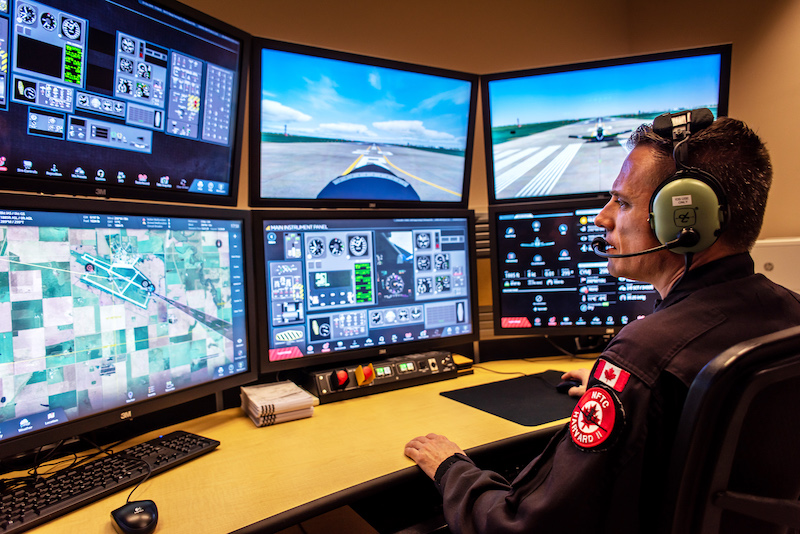As part of its pilot training program with the Royal Canadian Air Force, CAE recently completed major upgrades to the CT-156 Harvard (T-6) and CT-155 Hawk flight training devices (FTDs) at 15 Wing Moose Jaw. FTDs are used for ground-based training as part of the NATO Flying Training in Canada (NFTC) program for which CAE is the prime contractor.
Upgrades were done on three CT-156 Harvard FTDs and one CT-155 Hawk FTD, which are used extensively for NFTC pilot training syllabus. The work included replacing computing hardware on the simulators, adding new visual display systems, updating the instructor operator stations, and upgrading the image generators to the latest CAE Medallion series. Next, the company will commence work on upgrading the CT-155 Hawk FTD located at 4 Wing Cold Lake, which is used as part of Phase IV fighter lead-in training under the program.
“The ground-based training system and use of simulators have become increasingly important for military pilot training,” said France Hébert, Vice President and General Manager, CAE Canada. “With the upgraded flight training devices used for NATO Flying Training in Canada, we will now be able to deliver ground-based training that is more immersive and realistic, which in turn contributes to the more effective and efficient delivery of live flying training.”

The upgrades are already benefitting student pilots. According to a news release, the new visual systems provide more realism in the synthetic environment and have enabled training tasks such as formation flying and tactical scenarios to be rehearsed in the simulators. This enhances the efficiency of performing these tasks during live flying training.
As part of the NFTC program, CAE runs the base facilities in Moose Jaw and Cold Lake, delivers the ground-school classroom and simulator training, and supports the live flying training on a fleet of Beechcraft T-6 (CT-156 Harvard) and BAE Systems Hawk (CT-155 Hawk) aircraft. CAE delivers this program in collaboration with the Government of Canada in providing pilot training for the RCAF and allied militaries by merging basic, advanced, and lead-in fighter training as part of the comprehensive military pilot training program.
